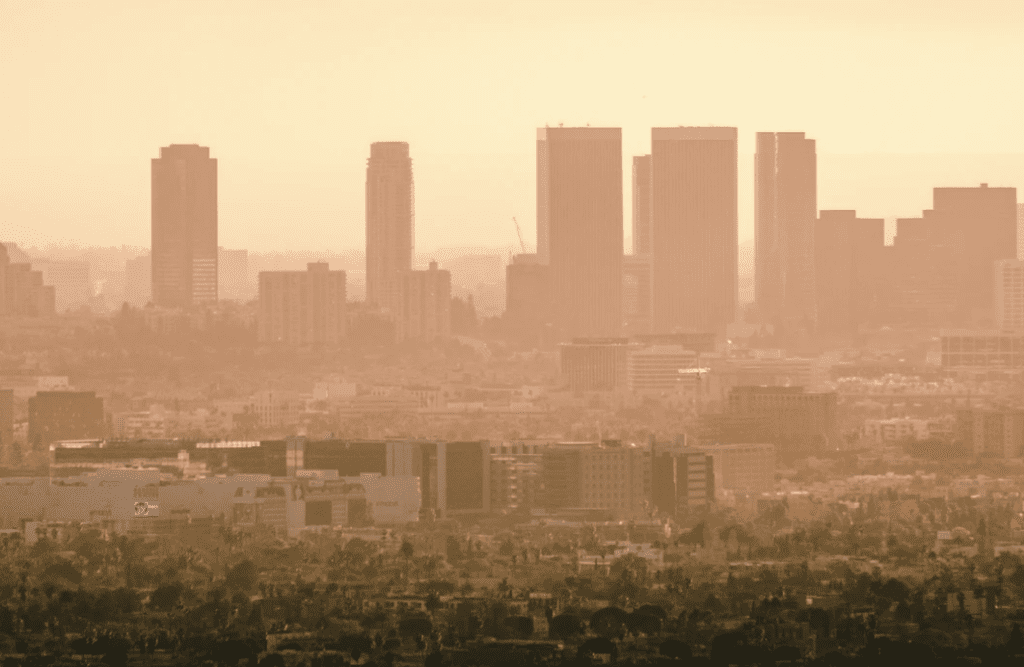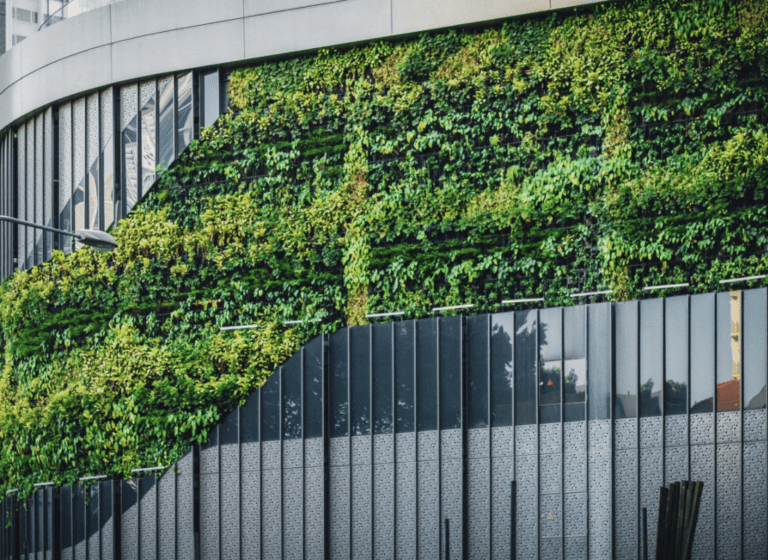It’s always been important to maintain air quality in protected spaces such as hospitals or schools. However, 2020 showed us first-hand that it is critical to maintain air quality everywhere we breathe.
Last year, with an airborne virus spreading, guaranteeing shared space had safe, bacteria-free air became completely impossible. And to make matters even worse, the worst smog levels in over thirty years were recorded in Los Angeles in September. Stagnant weather conditions and fires were major contributions to a new and terrible record.
Maintaining air quality can feel like an impossible problem for the average citizen to tackle. But what if there was a way to passively improve air quality indoors and out?
We’ll be breaking down why air quality matters (aside from pandemics) and how products like NawKote-PC may be able to help you combat the worst of it. There’s a lot to cover, so let’s get started!
Why Air Quality Matters
In places like Los Angeles, it’s not unusual to wake up and see a hazy sky. For residents, reports of poor air quality are so common, they’re often ignored.
But these warnings aren’t a joke. Smog makes it difficult to breathe, especially in hot weather. And the issue isn’t localized to California, either. In Salt Lake City, a weather phenomenon known as an inversion can press smoggy air down onto residents. In fact, inversions in northern Utah are so severe, it’s recommended to not go outside at all when they occur.
With that being said, how do we measure air quality in the first place? Smog can be seen, sure, but it’s often confused with fog. We need a way to measure air quality with tools that go further than what can be seen.
How We Measure Quality Outside
Outdoor air quality is measured by the Air Quality Index (AQI). Government agencies use the AQI to communicate to the public how polluted the air is or is forecasted to be. This is tracked on a zero to five-hundred scale, and measures the big five air pollutants:
- Ground-level ozone
- Particle pollution/particulate matter
- Carbon monoxide
- Sulfur dioxide
- Nitrogen dioxide
When looking at the big picture, poor air quality outside has big effects on the environment and the planet. It destroys agriculture, resulting in a shortage of food. It impacts animals, their habitats, and can even render species extinct.
When air quality is poor, building materials deteriorate faster, resulting in weakened and eroded structures. Global warming and climate change are also exacerbated. These are very dire consequences.
On an individual level, toxic air pollutants negatively affect our health and well-being. When our surroundings are smothered in smog, it is difficult to breathe outside even if the exposure time is brief. Exercising outside is dangerous when the AQI is bad. But is the air inside any better?

How Indoor Air Quality is Measured
Indoor air quality (IAQ) refers to the air quality inside buildings and other structures. Typically, IAQ pollutants sources stem from inadequate home ventilation. Examples of these pollutants include but are not limited to:
- Fuel-burning appliances
- Tobacco products
- Asbestos-containing insulation
- Certain pressed-wood products
- Pesticides
Of course, indoor air quality will be impacted by outdoor air quality, so it’s worth remembering that air within the home will be markedly worse if in a high-pollution environment.
IAQ is particularly important in protected spaces like schools and hospitals, as children and the elderly are particularly vulnerable to poor air quality. Office buildings, and specifically shared office spaces, also require good air quality to ensure the health and well-being of employees.
Testing air quality in these spaces is of particular importance to ensure the health of visitors and the public.
Combating Airborne Pollutants
Now that we’ve covered how air can be measured and quantified, it’s important to consider the ways we can mitigate and reverse airborne pollutants.
Indoors, there are many tools at our disposal to control air quality. High-efficiency particulate air (HEPA) filters can be employed in HVAC systems, which remove at least 99.97% of airborne pollutants. Fuel-burning appliances can be replaced with electrical options, and low-quality insulation can be swapped out. Photocatalytic finishing systems may also be used, but more on that later.
However effective these interior solutions might be, most cannot be employed outside. Weather patterns and terrain cannot be controlled, and aside from municipal ordinances on emissions and burning, there’s little to be done on a wide scale.
But that doesn’t mean there isn’t a way to solve such problems near your own structures! In fact, there are a number of solutions that property owners and architects can employ to combat airborne pollutants outdoors.
Green Architecture
Green architecture is a concept that has been gaining popularity over the past decade. Also referred to as green design, green architecture is the practice of designing buildings in a way that protects the environment.
For example, using energy-efficient exterior lighting and appliances, and building with responsibly harvested wood are aspects of green architecture. The ultimate goal is for the building to be constructed and maintained in a fully sustainable manner to ensure it remains eco-friendly for future generations.
Many architects are taking on the American Institute of Architects (AIA) 2030 challenge. Dubbed AIA 2030, this challenge supports architects in a collective challenge to cement carbon neutrality as a standard across the industry.

Photocatalytic Finishing Systems
Setting aside green architecture for now, photocatalytic finishing systems offer a method through which building owners and architects alike can ensure cleaner air both indoors and out.
Photocatalytic finishing systems such as NawKote-PC are designed to break down viruses and bacteria in the surrounding air, and even release oxygen into the air. This may sound too good to be true, but thanks to chemistry, these features and others are available for use on a variety of surfaces.
Taking a look at NawKote-PC specifically for a moment, we can see that this product uses a unique formula that contains photocatalytic TiO2 (titanium dioxide) nanoparticles. These nanoparticles in turn use the power of light to induce a chemical reaction.
When this chemical reaction occurs, harmful contaminants are removed from the air, and oxygen is released as a byproduct. The net result is cleaner, oxygenated air.
NawKote-PC is water-based, non-toxic, colorless, provides a long-lasting barrier, and can be applied either commercially or residentially. Outside, NawKote-PC can be applied to building exteriors roofs, decks, solar panels, and similar surfaces.
Due to the nature of NawKote-PC, these surfaces won’t pick up as many dust particles as their uncoated counterparts—reducing dust accumulation. NawKote-PC also uses electrostatic repulsion to prevent dirt from sticking, enabling surfaces to clear more debris when rained on.
Buildings that are coated with NawKote-PC will only need to be cleaned twice in ten years. In comparison, buildings without the application need to be cleaned six times in ten years, on average.
Now is the time to leverage science, and specifically photocatalytic technology, to make our homes, offices, and yards safer spaces for everyone.
Final Thoughts
Managing air quality is a holistic and complex process, so there is no one-size-fits-all solution for interior and outdoor air quality control.
However, we hope it’s clear that air quality matters more than you may have initially thought—and that there are many solutions available to maintain air quality no matter where you are.
From simple product replacements to powerful finishing systems such as NawKote-PC, the tools are out there to reduce pollutants in the local environment and help everyone breathe just a little bit easier.

